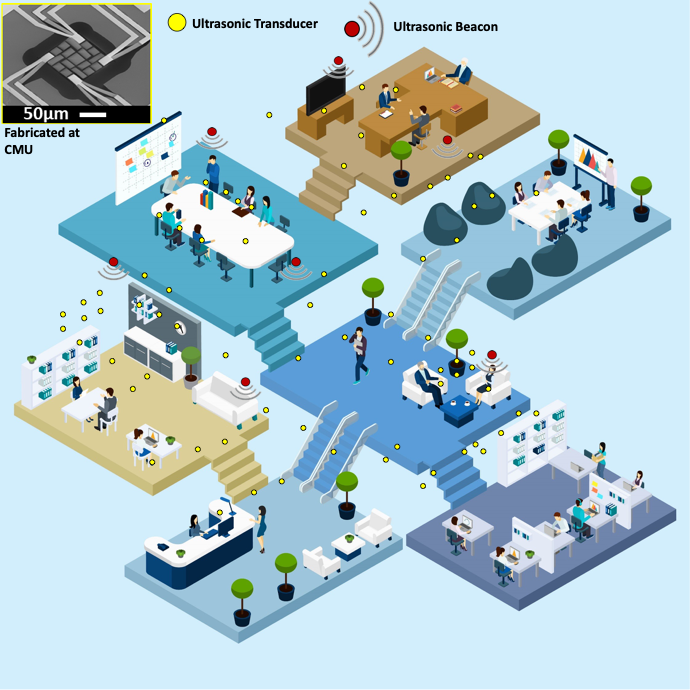Power-full sound waves
Gianluca Piazza is developing a piezoelectric system that powers devices with ultrasound.
Trillions of sensors are in our future, and they will need energy. Batteries are routinely used to power tiny devices, but there are other options. Piezoelectricity, the technology that converts mechanical energy into electricity, is gaining attention these days because it can scavenge energy from movement or vibrations.
For this reason, Carnegie Mellon researchers are exploring the use of piezoelectricity for smart city applications. Smart cities will rely on massive sensor networks, and the sensors in these systems will need energy. Continually replacing sensor batteries would be extremely time consuming and produce waste materials that would be difficult to dispose of.

Source: College of Engineering
“It would be a lot more efficient if you could just live off of scavenged energy. You eliminate batteries and their problems, and instead you harvest energy,” said Gianluca Piazza, a professor of electrical and computer engineering and the director of the John and Claire Bertucci Nanotechnology Laboratory.
There are different ways of harvesting energy. While other researchers are extracting energy from solar, heat, and mechanical vibrations, Piazza’s team focuses on powering devices with ultrasound. They launch sound waves that transfer over relatively long distances and are captured by tiny piezoelectric devices co-located with sensors, and hence, remotely powering the sensors.
You have a power source somewhere, and you have all the sensors. Whenever you need to power them, you just send this blast of sound waves to them. They receive it, and they turn on.
Gianluca Piazza, Professor, Electrical and Computer Engineering
“So you have a power source somewhere, and you have all the sensors. Whenever you need to power them or interrogate them, you just send this blast of sound waves to them. They receive it, and they turn on,” explained Piazza.
Because these sound waves are a bit more than 40 kilohertz—right above the audible range—they do not bother humans or animals. They can efficiently transmit over 10-30 meters, which is around 30-100 feet.
Piazza’s research is currently designed for indoor applications. Take a conference room as an example. There would be a large speaker that sends out sound waves to different sensors distributed in the room. These sensors, which are about the size of a grain of sand, have membranes that vibrate and generate a charge when they receive the waves.
“It’s like the same way when you’re moving your foot in your shoe, you’re actually stimulating the piezoelectric material and generating a charge,” said Piazza.
Although Piazza’s system doesn’t generate a lot of electricity, it’s enough to power small radio devices that send and receive signals. Currently, the power source that launches the sound waves needs to be plugged in. Piazza’s team would like to further develop the system so they can launch sound waves without the need of plugged-in units. To this end, researchers at Carnegie Mellon and elsewhere are exploring novel piezoelectric materials that can be used to harvest energy, which could be beneficial for indoor communications, smart infrastructure, and implantable or wearable devices.
